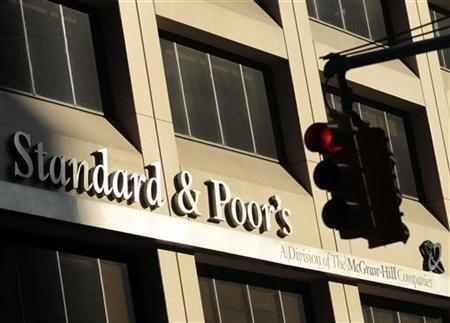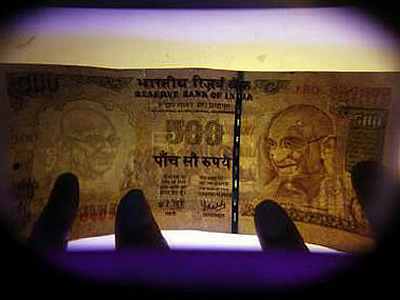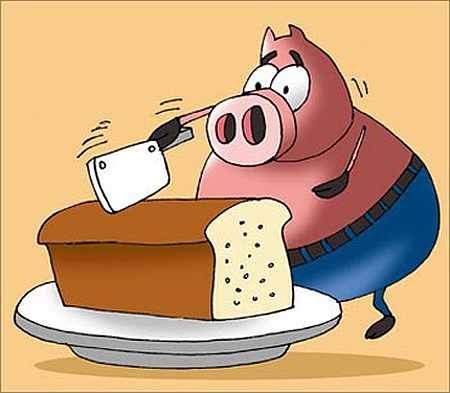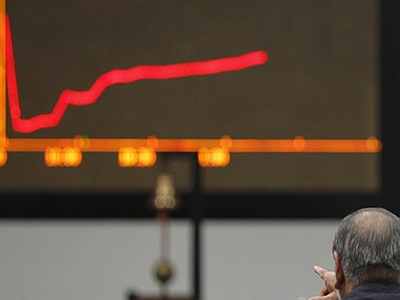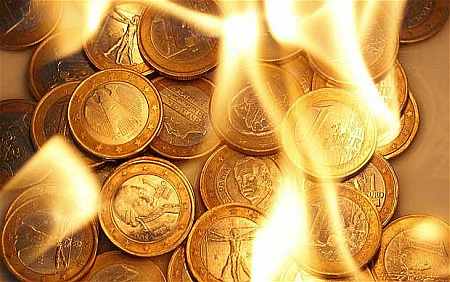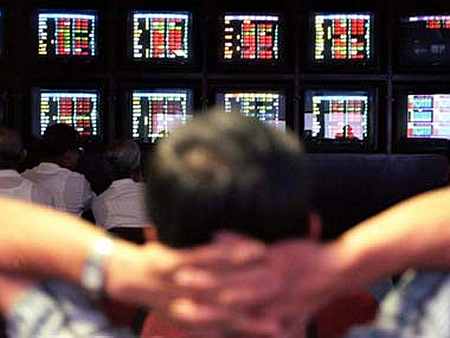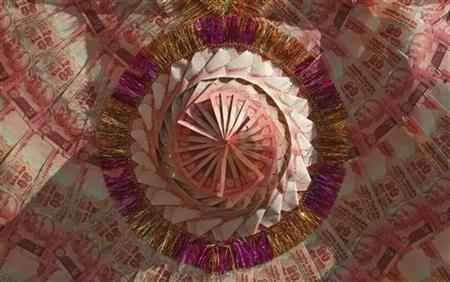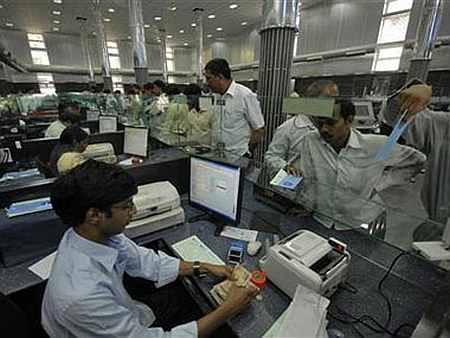 | « Back to article | Print this article |
Is S&P's negative outlook justified?
Mahesh Vyas
Managing director and CEO, Centre for Monitoring Indian Economy
Standard & Poor's (S&P's) negative outlook is based on an expectation of a deterioration of India's external position, diminishing growth prospects and its slow progress on fiscal reforms.
Fiscal 2011-12 was a weak year. Growth declined sharply, inflation was stubbornly high, the current account deficit deteriorated substantially, Parliament demonstrated its inability to pass legislation and its authority over policy-making was momentarily challenged. The rating agency seems to be combining all of this in some kind of a straight-line projection into the near future by declaring the outlook negative.
Interestingly, S&P's own forecast does not suggest a deterioration in 2012-13 as there was in 2011-12. In 2011-12, real GDP growth declined a substantial 1.6 percentage points (from 8.4 in 2010-11 to 6.8 per cent).
Click NEXT to read more...
Is S&P's negative outlook justified?
S&P did not term the outlook for 2011-12 negative. Now, when it expects the fall in real GDP to be a marginal 0.2 percentage points (a measure that can easily fall within a margin of error of any forecasting model) it has termed the outlook negative.
S&P's growth forecast for 2012-13 at 6.6 per cent is much lower than the forecast by most other agencies. At the Centre for Monitoring Indian Economy, we believe that the economy will rebound in 2012-13 with a 7.6 per cent real GDP growth. The outlook is more positive than negative.
Interest rates have declined and are expected to remain low, supply bottlenecks seen in 2011-12 – the availability of coal, gas and iron ore -- have eased.
Click NEXT to read more...
Is S&P's negative outlook justified?
New capacities worth a record Rs 4 trillion were commissioned in 2011-12. As a result, the industrial sector is expected to grow at an accelerated 6.7 per cent in 2012-13 compared to 4.1 per cent growth in 2011-12.
In spite of the slower pace of investment activity in 2011-12, the commissioning of projects reached record levels. We expect investment activities to improve significantly in 2012-13 since supply constraints have waned.
Capacities worth Rs 4-5 trillion are expected to be commissioned in 2012-13. The sustained creation of new capacities in recent years has raised employment in the organised sector, which, in turn, has sustained growth in consumption expenditure. Poor official statistics do not reflect this.
Click NEXT to read more...
Is S&P's negative outlook justified?
But topline growth of the corporate sector shows this eloquently. A third consecutive year of normal monsoon strengthens the case for robust consumption expenditure growth. We believe that the combination of healthy investment and consumption growth would fuel real GDP growth in 2012-13.
Long-term problems afflicting investments remain. These mostly pertain to land acquisition for private projects and environmental concerns. In the interest of long-term and sustainable growth, it would be unwise for any government to rush legislation in these cases without sufficient consensus.
The same applies to the Goods and Services Tax and even the Direct Taxes Code and, of course, the Lok Pal Bill. While all these legislations will make India a better country, delays in their implementation does not lead to any slowing of growth. It merely slows the potential acceleration.
Click NEXT to read more...
Is S&P's negative outlook justified?
The rating agency has also expressed concern over the fiscal deficit and the current account deficit. Both deteriorated in 2011-12 and are expected to improve marginally in 2011-12. The agency is less worried about the external position.
The gross fiscal deficit rose to 5.9 per cent of GDP in 2011-12 from 4.9 per cent in 2010-11. It was six and 6.5 per cent in the preceding two years. The government projects a fall in the ratio to 5.1 per cent. We expect this to be at least 5.4 per cent. It could be worse but not more than what it has been on average in the past four years (5.8 per cent). And this is unlikely to hurt growth in 2012-13 or destabilise the financial markets.
The rating agency has no estimates of the expected fiscal deficit or its acceptable level. But it expects faster "progress" in fiscal reforms during the year to stop itself from downgrading India.
Click NEXT to read more...
Is S&P's negative outlook justified?
It even prescribes the reforms it expects, which include a reduction in restrictions on foreign investments in banking, insurance and retail. Foreign investment in retail is a good idea, but I do not see a connection between this and the fiscal deficit.
And why should a failure to allow foreign direct investment into specific sectors lead to a downgrade?
The assessment loses credibility when it becomes prescriptive and seems to push the envelope for some particular investments. Happily, the markets are smarter and the India growth story is intact.
Click NEXT to read more...
Is S&P's negative outlook justified?
Anis Chakravarty
Senior director, Deloitte Touche Tohmatsu India
On April 25, Standard & Poor's (S&P) cut India's outlook from stable to negative. Importantly, the outlook downgrade now puts India's investment-grade rating at risk. The country's current rating of BBB- rating is one notch above "junk," which would see India having to pay higher interest rates on its public borrowing.
Although S&P has maintained India's rating, it has warned of a status change if the financial situation worsens. Moreover, Moody's Analytics has cited that India's weak national government remains the single biggest drag on economic activity.
Was this expected? The answer, which not everyone may appreciate, is a resolute yes.
Click NEXT to read more...
Is S&P's negative outlook justified?
During the Union Budget, the government was faced with the twin objectives of enhancing economic growth and containing inflation.
Gross domestic product (GDP) grew at its weakest annual pace in almost three years between October and December 2011, as high interest rates and rising input costs constricted investment and slowed manufacturing. The year concluded with a GDP growth of 6.9 per cent, much lower than the expected nine per cent announced only a year ago.
Despite domestic demand growth declining markedly in the past two quarters, wholesale price index inflation remained stubbornly high, reflecting price stickiness and the impact of continued rupee depreciation.
Although the Reserve Bank of India (RBI) raised interest rates throughout the year, inflation containment did not work to the extent expected.
Click NEXT to read more...
Is S&P's negative outlook justified?
High rates raised borrowing costs, which, in turn, raised input prices and resulted in thinning margins. Consequently, manufacturing suffered, leading to some of the lowest rates of industrial growth in the past five years.
The battle with fiscal sustainability continued as the government faced the Herculean task of lowering fiscal deficit levels from a dismal 5.5 per cent in Q3 of 2011-12 to a target 4.6 per cent announced in the last Budget.
Uncertainty in global markets and Europe's long-running sovereign debt crisis added to pressures. A high oil import bill and continued subsidies in fertilisers resulted in the government absorbing the cost of subsidies to a larger extent than expected. The price of gold imports also rose steadily.
Click NEXT to read more...
Is S&P's negative outlook justified?
The burgeoning subsidy bill coupled with low tax revenue required the government to explore alternate sources of financing this deficit.
Although the government had set a target of approximately Rs 40,000 crore (Rs 400 billion) from disinvestment proceeds, it was able to raise a mere Rs 1,145 crore (Rs 11.4 billion) through this route till February. Consequently, the year ended with a fiscal deficit of 5.9 per cent, a far cry from the target of 4.6 per cent.
In recent weeks, RBI has said India's financial stability could be impaired if the current account deficit widens to uncontrollable levels. The current account deficit reached 4.3 per cent of GDP in Q3 of 2011-12. This is considered the highest since the balance of payments crisis of 1991.
Click NEXT to read more...
Is S&P's negative outlook justified?
RBI has added that debt inflows will not solve this issue since such funding will have implications for India's external debt position and, consequently, for financial stability.
Investor sentiment is being affected by tax amendments announced in the Budget. Besides the provisions of General Anti-Avoidance Rules and retrospective tax law changes, there is a feeling of uncertainty and high compliance burden that has aggravated the situation. Such sentiments may impair foreign direct investment (FDI) that has turned negative over the past two years.
India urgently needed bold reforms. Tough decisions on fuel and fertiliser in subsidies were required. An increase in the retail price of petrol, diesel and LPG would have helped rein in the fiscal deficit.
Click NEXT to read more...
Is S&P's negative outlook justified?
While inflation would have been an immediate consequence, the market would have adjusted by cutting consumption. This would have addressed the current account imbalance by reducing the import burden.
Moreover, a high fiscal deficit coupled with surging inflation can pose a threat to domestic growth. Strengthening the supply side by pushing FDI in retail would have helped address the chronic inflation problem.
The good news is that for now, India's investment grade rating is intact. It is important to win back investor confidence and a wake-up call was probably required. Only time will tell how India turns this challenge into an opportunity.
These views are personal.
